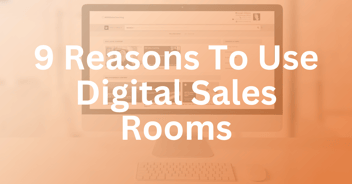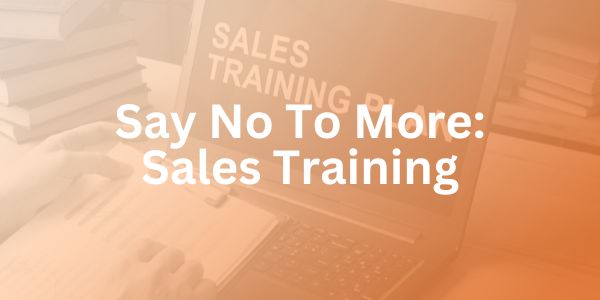
9 Reasons Why B2B Sales & Revenue Teams Should Use Digital Sales Rooms
9 Reasons Why B2B Sales & Revenue Teams Should Use Digital Sales Rooms
Today, more and more B2B...
Welcome to our 'Say No To More' series, where we uncover the diminishing impact of current B2B go-to-market strategies, and shine the spotlight on the new strategy proven to help Sales teams sell more effectively: engaging buyers digitally through Digital Sales Rooms or Buyer Portals.
At Omedym, we talk a lot about the fallacy of the "More" button – the belief that simply doing more of the same strategies will magically solve your business challenges. Today, we're taking a closer look at a common culprit in this cycle: more sales training.
Of course, training has its place in ensuring your team is operating as intended. But when sales outcomes are below expected, too many teams look inward to solve the problem with more training.
A common question we see is “Our reps aren’t reaching their quotas - what kind of training can we give them to support them and improve their outcomes?” Let's take a look at why this is not the question Sales leaders should be asking.
Unfortunately, the reality of administering more training is that it's incredibly resource intensive and at best, delivers incremental improvements. Let's break it down:
More training is resource intensive:
- Creating and conducting training programs demand weeks of time and effort.
- Administering training takes salespeople away from revenue-generating activities.
- Teams spend valuable cash on software or special courses to administering training.
To make matters worse, guess who doesn't like going through training? Everybody. Do you?
And more often than not, more training is accompanied by warnings to keep expectations of improved success low, like: "Without diligent reinforcement, it's possible reps will forget the new information within a week or two" or "Note that training will only accomplish so much without additional intervention!"
What are the results of more training? We see Sales Enablement leaders talk about how their training isn’t yielding the results they expected or that the training isn't catching on.
And then you're back at square one - no improvement in sales outcomes despite spending weeks planning and executing training.
The hard truth is, all the training in the world doesn't matter if your buyers won't engage. Your current strategy yields low engagement, and trying to remedy it with more training is like fueling a car with more gas when the engine needs a tune-up; the problem persists, and resources are wasted.
So, instead of asking, "What new training framework should I use?" consider asking, "How can we increase buyer engagement?"
The answer lies in a new go-to-market (GTM) strategy – offering your buyers a digital experience that facilitates the learning and buying process. Digital channels like digital sales rooms and buyer portals create a convenient, rewarding experience that increases buyer engagement by 40%!
To solve the problem of poor sales outcomes, don't look inward to fix your problem; look outward and make it easier and more rewarding for your buyers to engage with you and your products/services.
The flaw in your current strategy is not your team's lack of knowledge; it's the disconnect between your sales motion and how modern buyers engage. Rather than focusing on MORE training, concentrate on getting your sales reps more time with buyers, in a way that allows them to influence deals.
In the end, it's not about doing more; it's about changing your approach. Break free from the belief that more training will help your sales team succeed and focus on what would really help them –more engagement and interactions with buyers.
Leading Sales, PreSales, and Revenue teams use Omedym's best-in-class buyer engagement platform to consistently close deals by providing a modern buying experience. Learn more here.

Today, more and more B2B...


